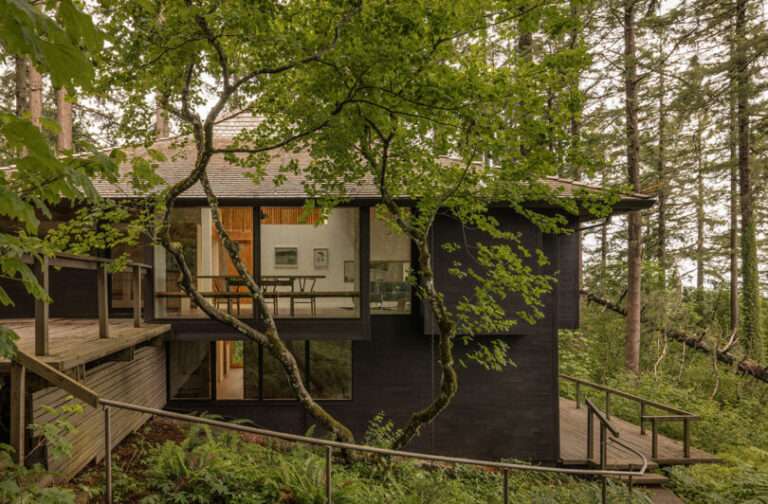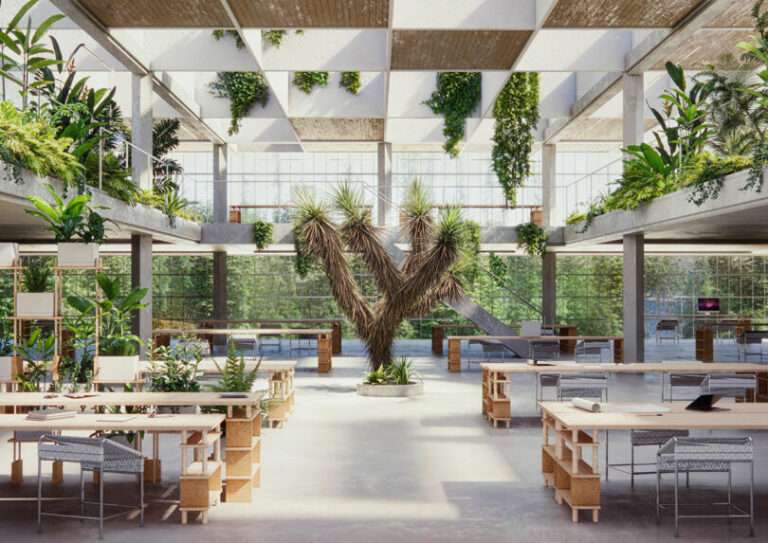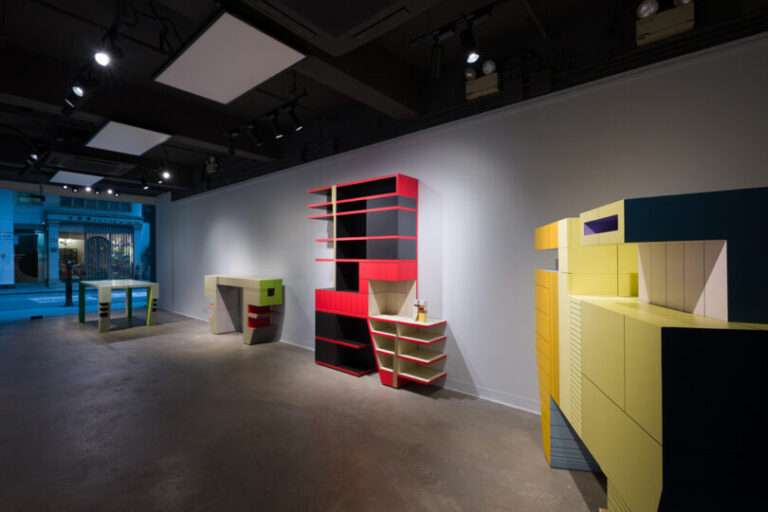Amazon’s newest office – unexpectedly named “Hank” – is located in Midtown Manhattan in what was once the home of storied department store Lord & Taylor. The building has undergone a years-long renovation and restoration since being designated as a landmark in 2007 by the New York City Landmarks Preservation Committee. That history alone made it important for Amazon’s Project Hank to honor its roots while providing a comfortable, collaborative workspace for more than 2,000 employees. The brand commissioned art consulting firm IndieWalls and two talented local textile artisans – William Storms and Brit Kleinman – to create larger-than-life art installations that would become focal pieces within the refreshed space.
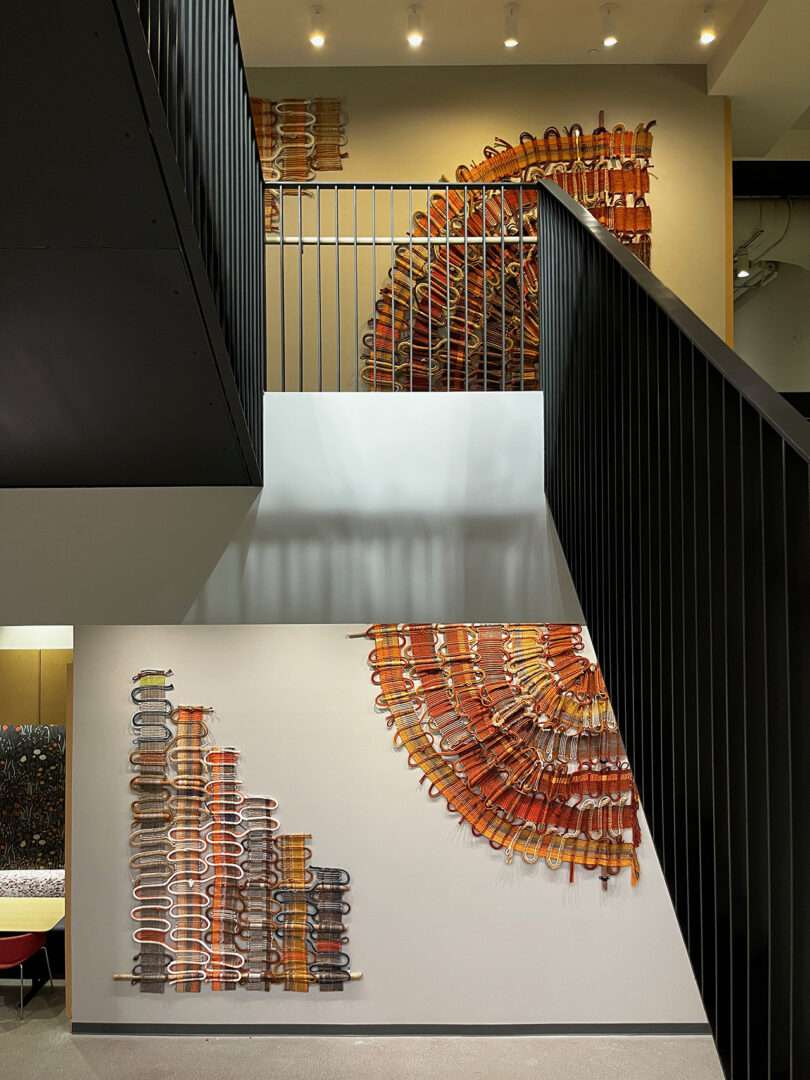
“Hand-weaving a piece for a landmark building on Fifth Avenue? It wasn’t even on my radar,” said William Storms. “When initially approached by IndieWalls and WRNS to create this 300-yard, 9-story handwoven artwork for Amazon’s HQ in the landmark Lord & Taylor building, it took all of two seconds for my brain to daydream and decide I wanted to give it my everything.”
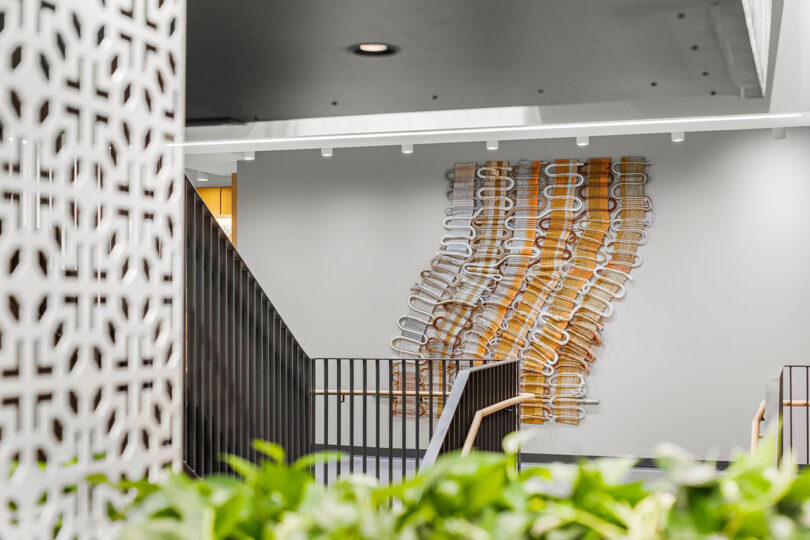
Storms’ oversized woven works, titled Love, Grandma Jo, consist of over 300 astonishing handwoven yards (Loom Woven – Passementerie). Making its way from Floor 2 all the way up to the skylight on Floor 10, the installation transforms in color and material along the way – from walnut and lucite to brass and eucalyptus. As visitors travel up the staircase they’ll encounter different perspectives, with new compositions on the mezzanines between each floor.
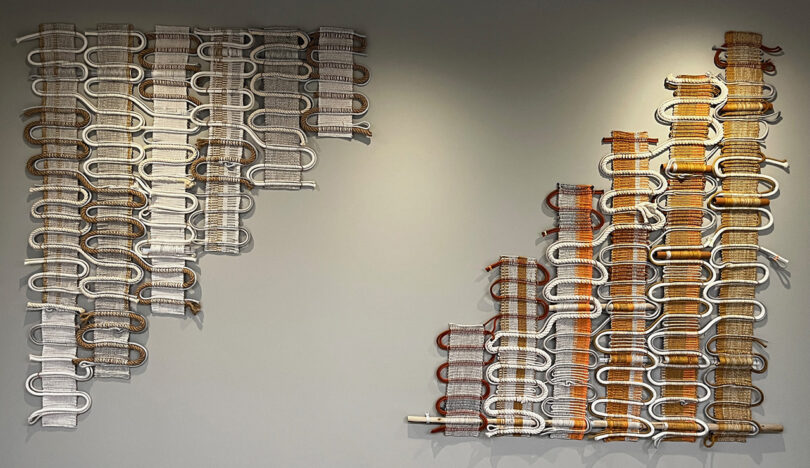
On the personal side, Love, Grandma Jo nods to the Storms’ relationship with the landmark’s history. His grandmother, Josephine, was a loyal customer of Lord & Taylor. In her honor, Storms wove her signature – taken from a holiday card – into the top floor of the piece.
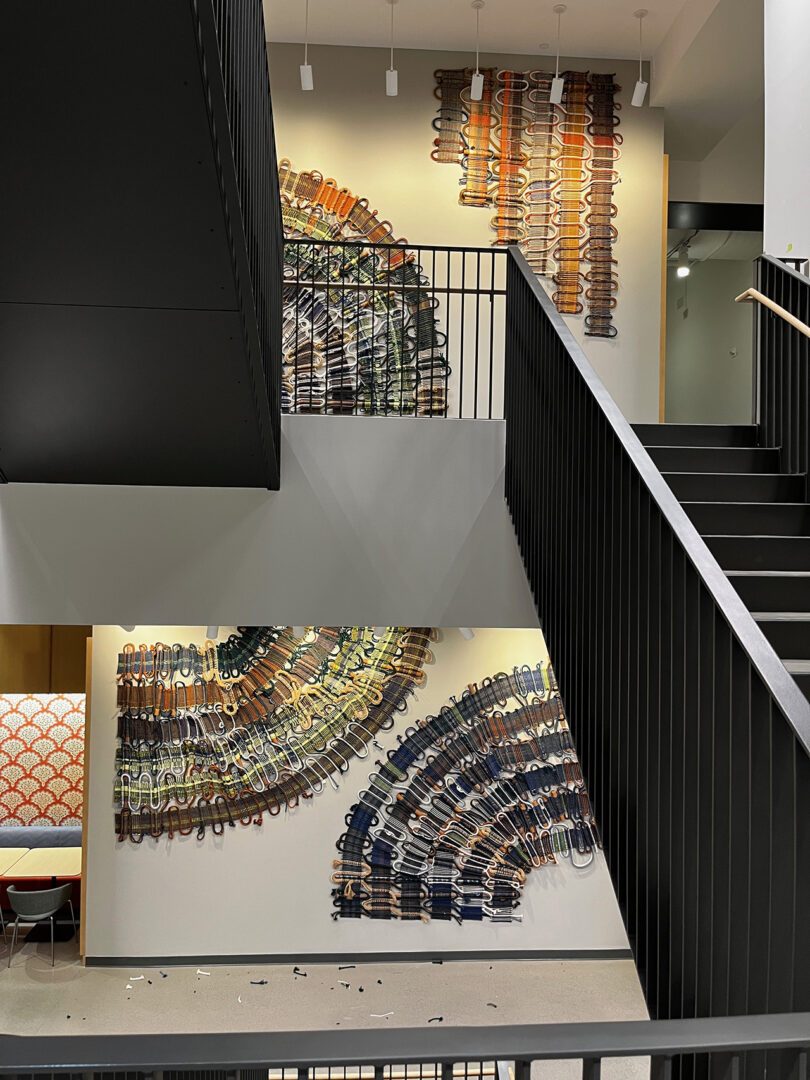
Storms is a mathematically driven craftsman who straddles the lines between fiber, sculpture, and architecture. Once he discovered the loom and was introduced to the world of hand-weaving for the interior design trade, he was hooked. In 2011, he opened a bespoke textile studio in Brooklyn, with a focus on producing “three-dimensional work in a traditionally two-dimensional world.”
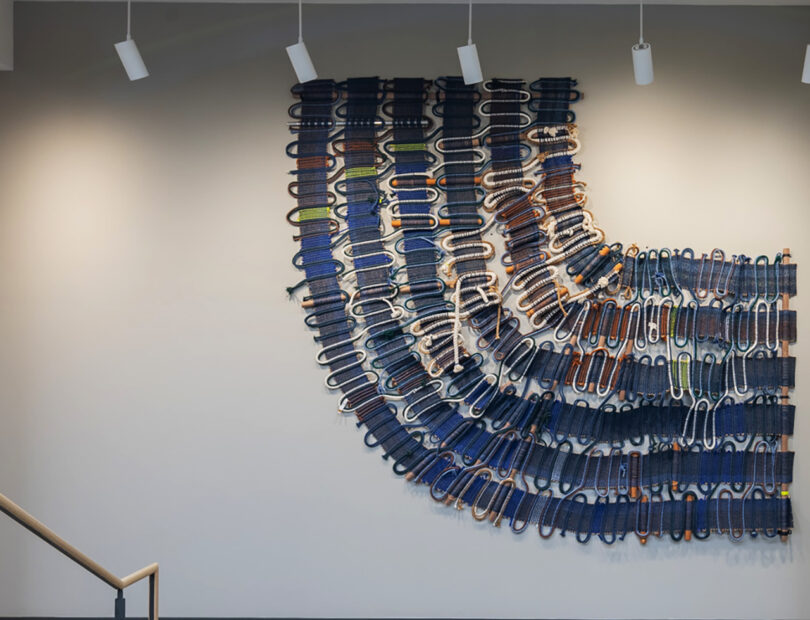
“Looking at the piece now, I feel its magnitude and am still processing that I wove it alone. Textiles by nature happen in the singular; one knot, stitch, or pick at a time,” Storms said. “The process is incredibly macro focused on that seemingly insignificant small action, over and over and over… it’s therapeutic, honestly. This work has made me realize the power of consistent, dedicated action and how one small knot or pick will eventually build into something that’s very humbling to stand in front of. In the end, it has left me feeling like the small one, standing in awe of its tremendous scale and organic beauty.”
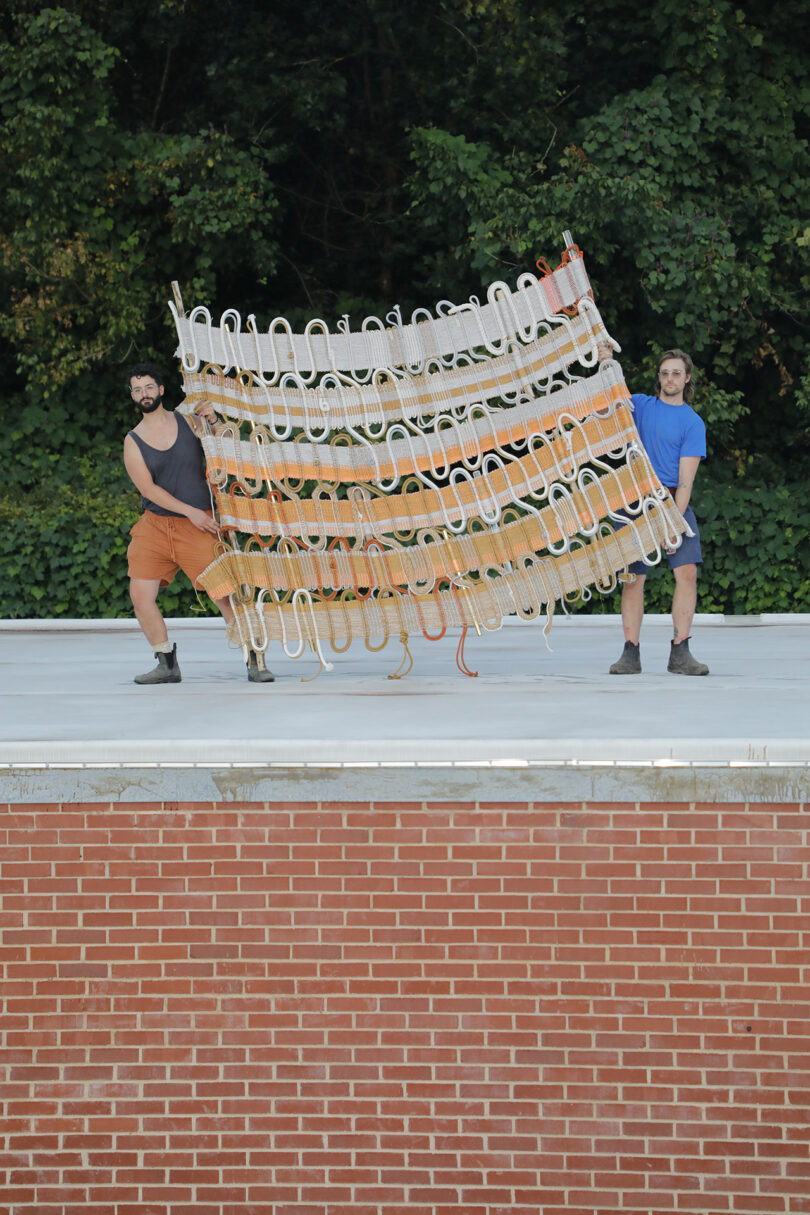
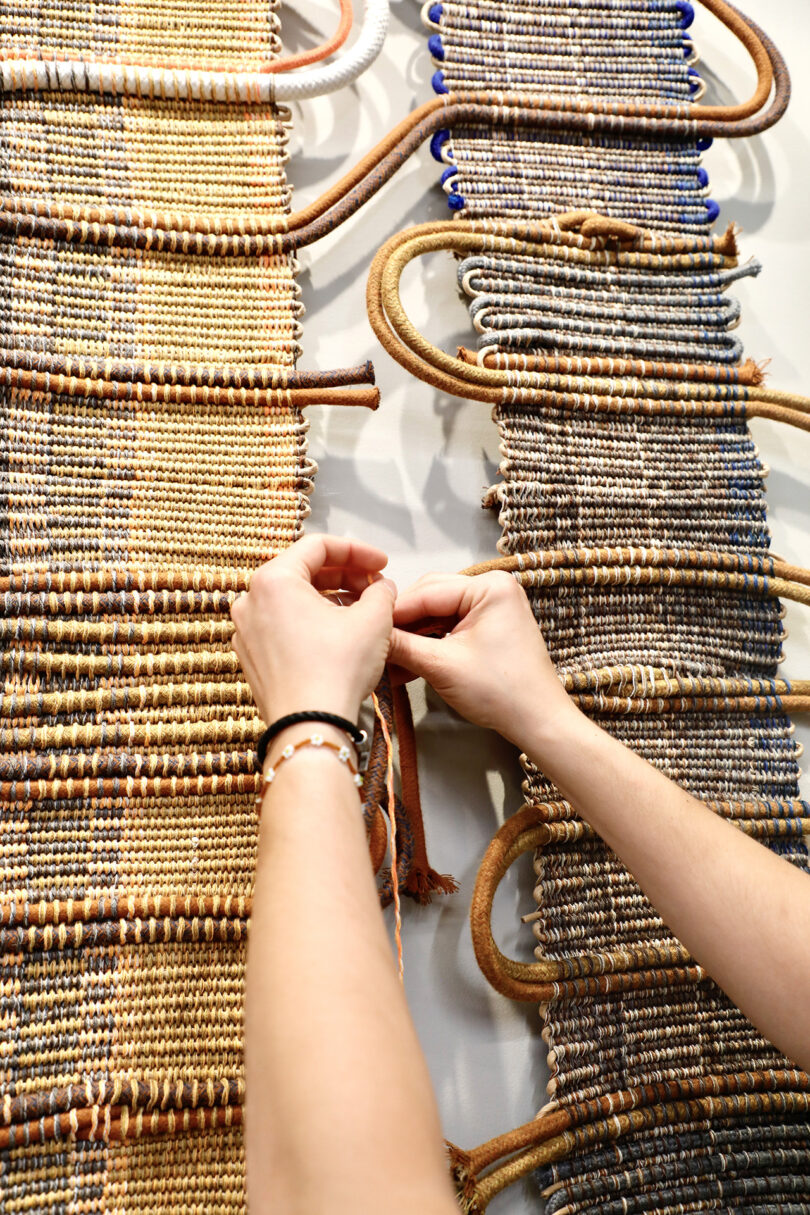

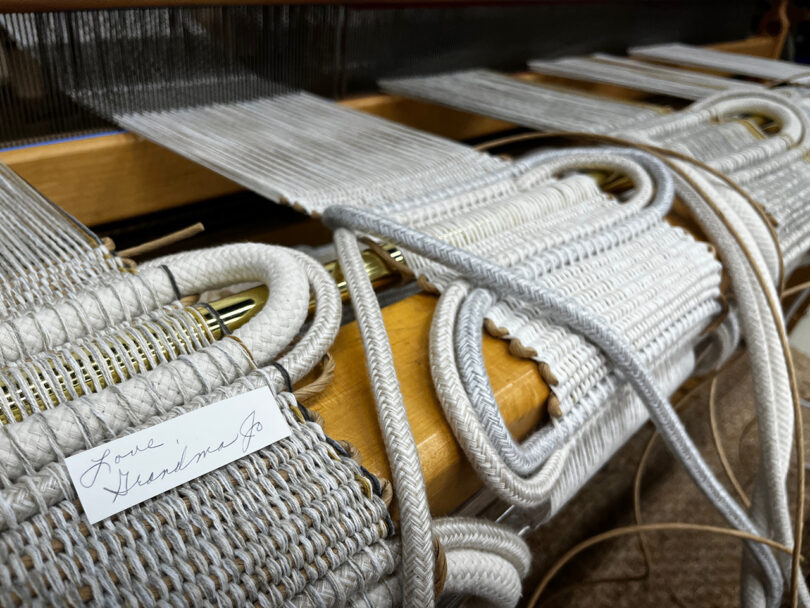
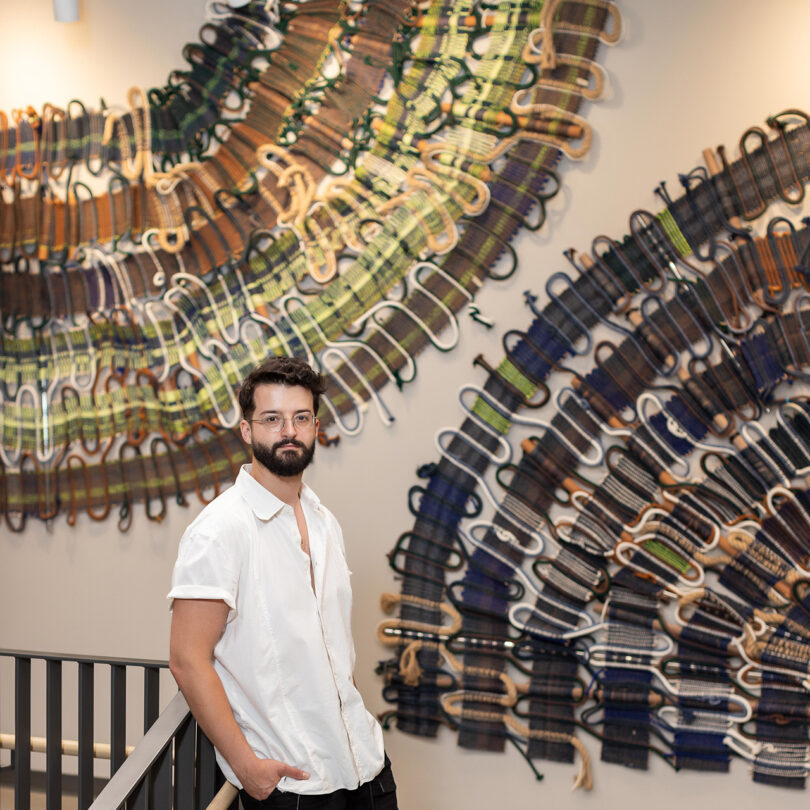
William Storms

Photo: AVO
Artist Brit Kleinman, founder of AVO, created Bird Cage as a tribute to the historic textile building that bridges the technology of the past with that of the present. Creating a nest-like space on the inside with an undulating blue exterior, the installation transforms the more you explore. With a form that symbolizes technology and systems binding us together, Bird Cage celebrates these physical spaces where memories are made.

Photo: AVO
Clocking in at over 880 hours to create, the installation was conceived and crafted by Kleinman and her team at AVO. Each rope was constructed by hand over several months, one knot at a time, without any machinery. Bird Cage utilizes six distinct weaves, each designed to seamlessly fit within the serrated edges of the main steel structure it encloses. Up close, these intricately handwoven ropes undergo a color transition across floors that signifies the passing of time and the evolution of ideas.
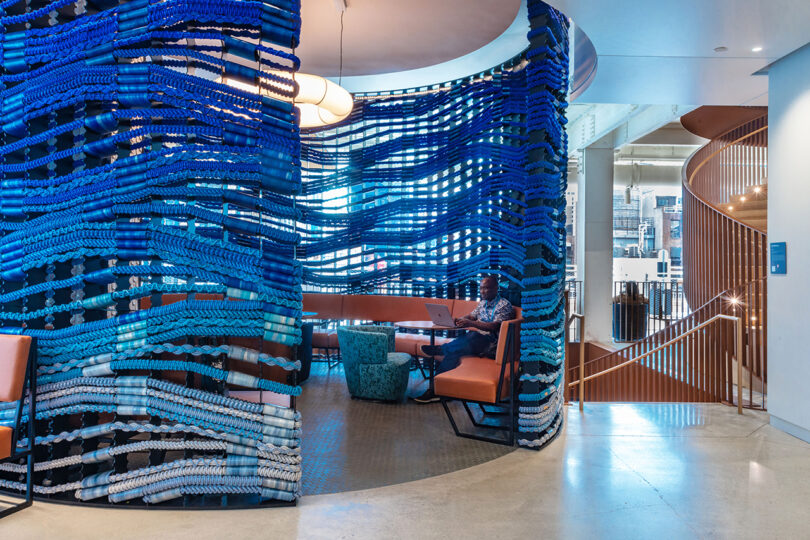
Photo: Hollis Johnson
“Bird Cage is your secret hideout in the middle of a workday. Where time paints patterns on the floor as the sunlight cascades through the undulating ropes with views of the Empire State Building in the background,” Kleinman shared.
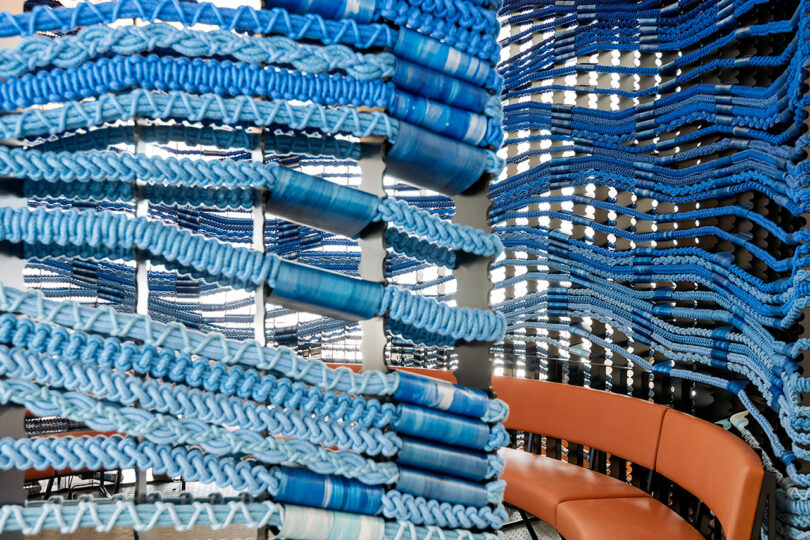
Photo: Elliot Goldstein
The artwork’s subtle ombré effect employs a whopping 27 colors of yarn dyed cording and hand-dyed leather cuffs. These cuffs act as a structural component that secures the ropes to the steel structure, as well as forming patterns that weave in and out.
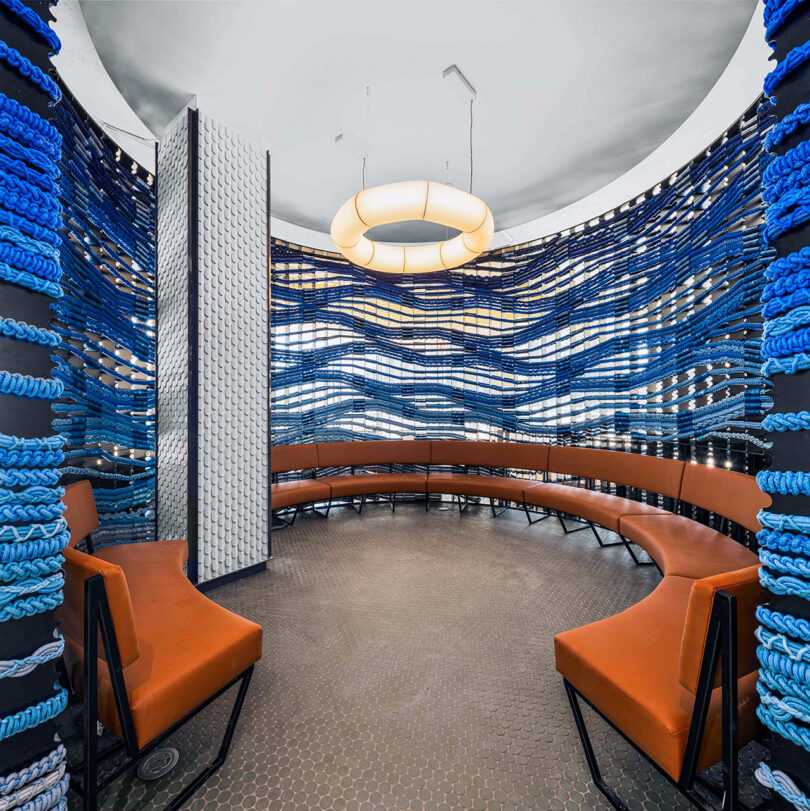
Photo: Majid Aliyev
“When I was approached to create an art installation for Amazon’s iconic NYC office, I must admit, I was genuinely taken aback by the opportunity,” Kleiinman divulged. “Bird Cage is my largest piece to date, and I love how it exists beyond the wall and becomes an immersive experience. I want people to do more than just look at it; I want people to step inside, feel connected, and be inspired by the passion woven into its intricate details.”

Photo: Bilyana Dimitrova
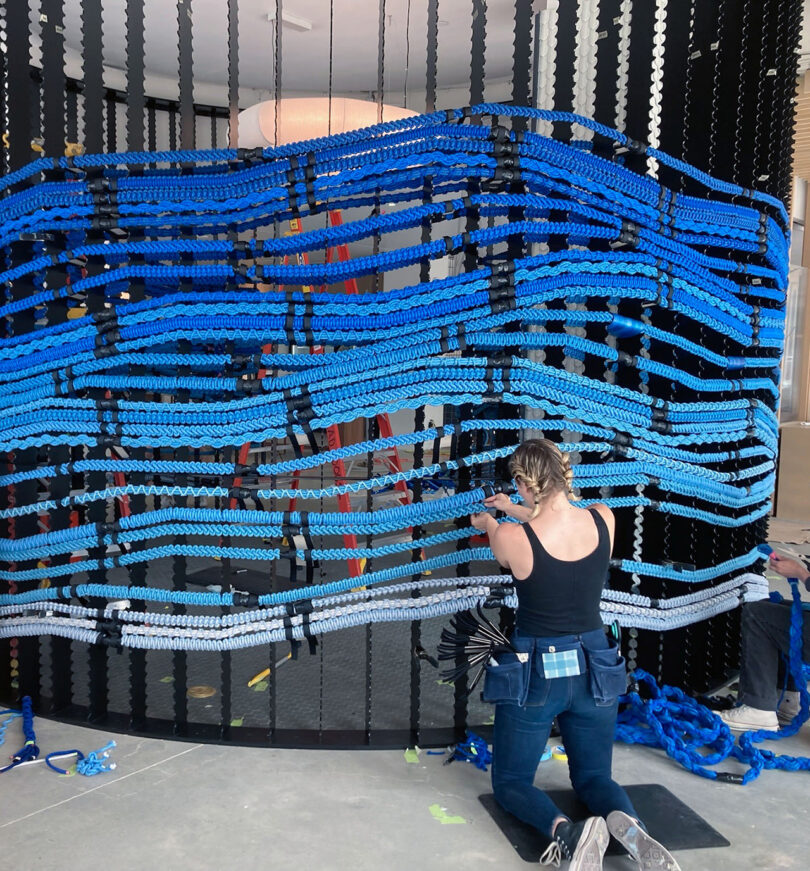
Photo: AVO
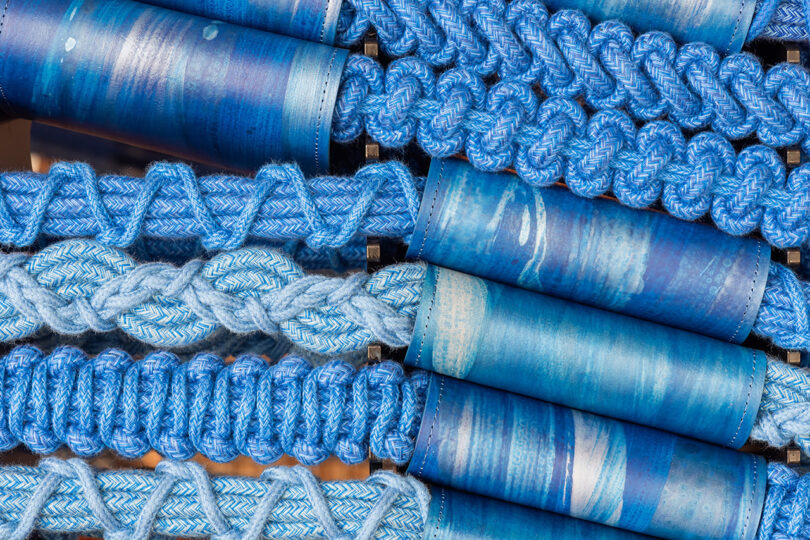
Photo: Elliot Goldstein
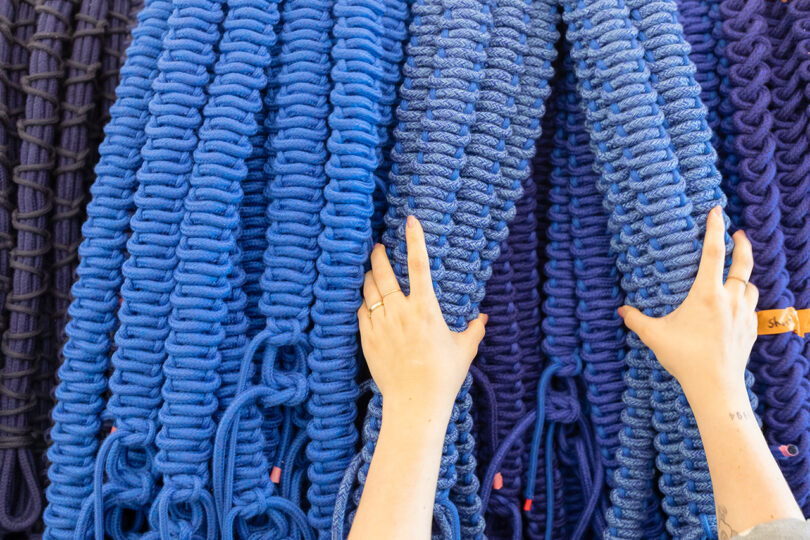
Photo: AVO
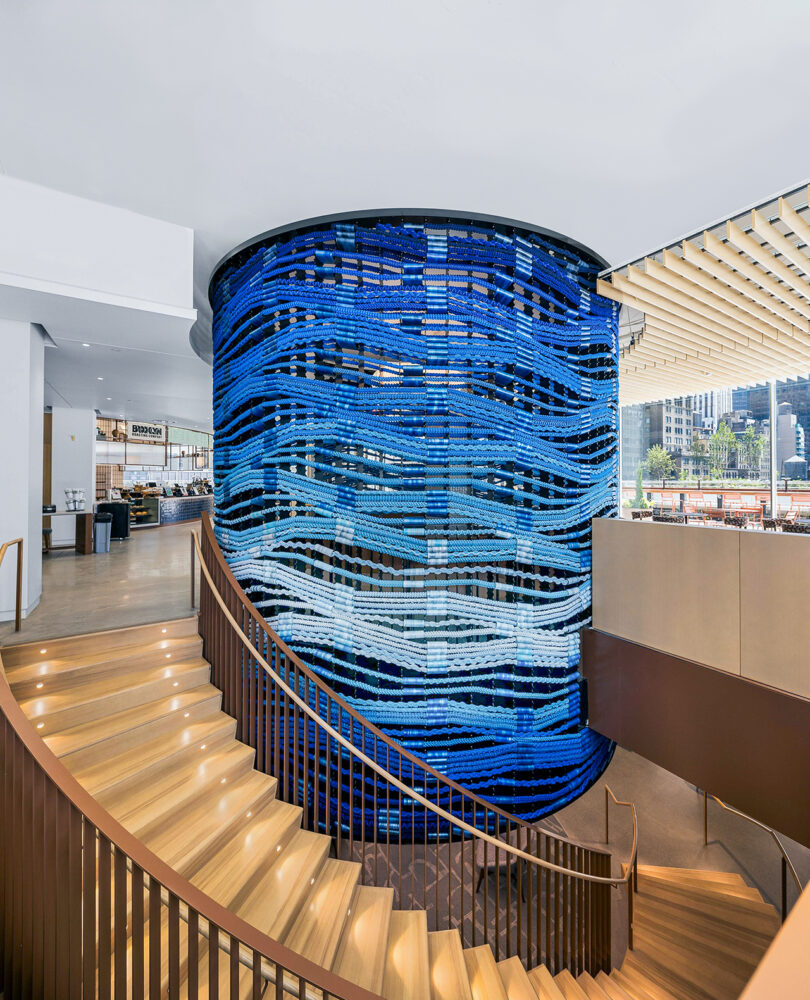
Photo: Majid Aliyev
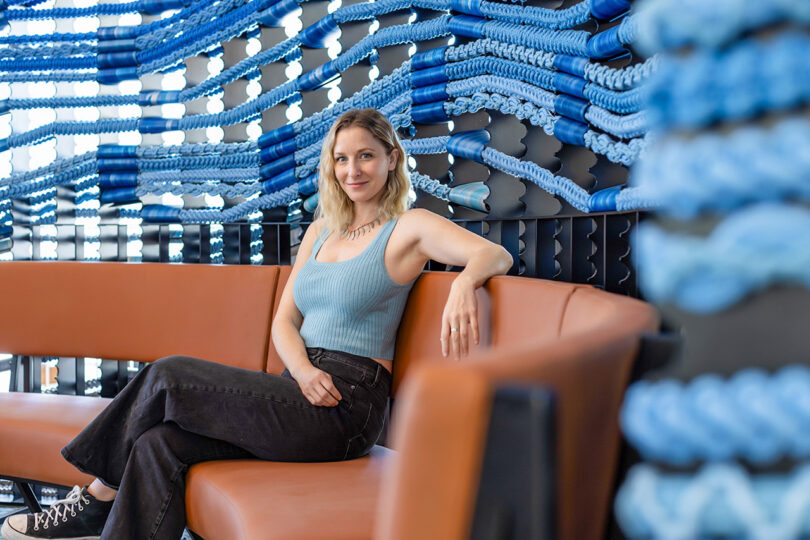
Brit Kleinman Photo: Majid Aliyev
To learn more about Williams Storms’ work, visit williamstorms.com. To find out more about Brit Kleinman and AVO, click over to avoavo.com.

